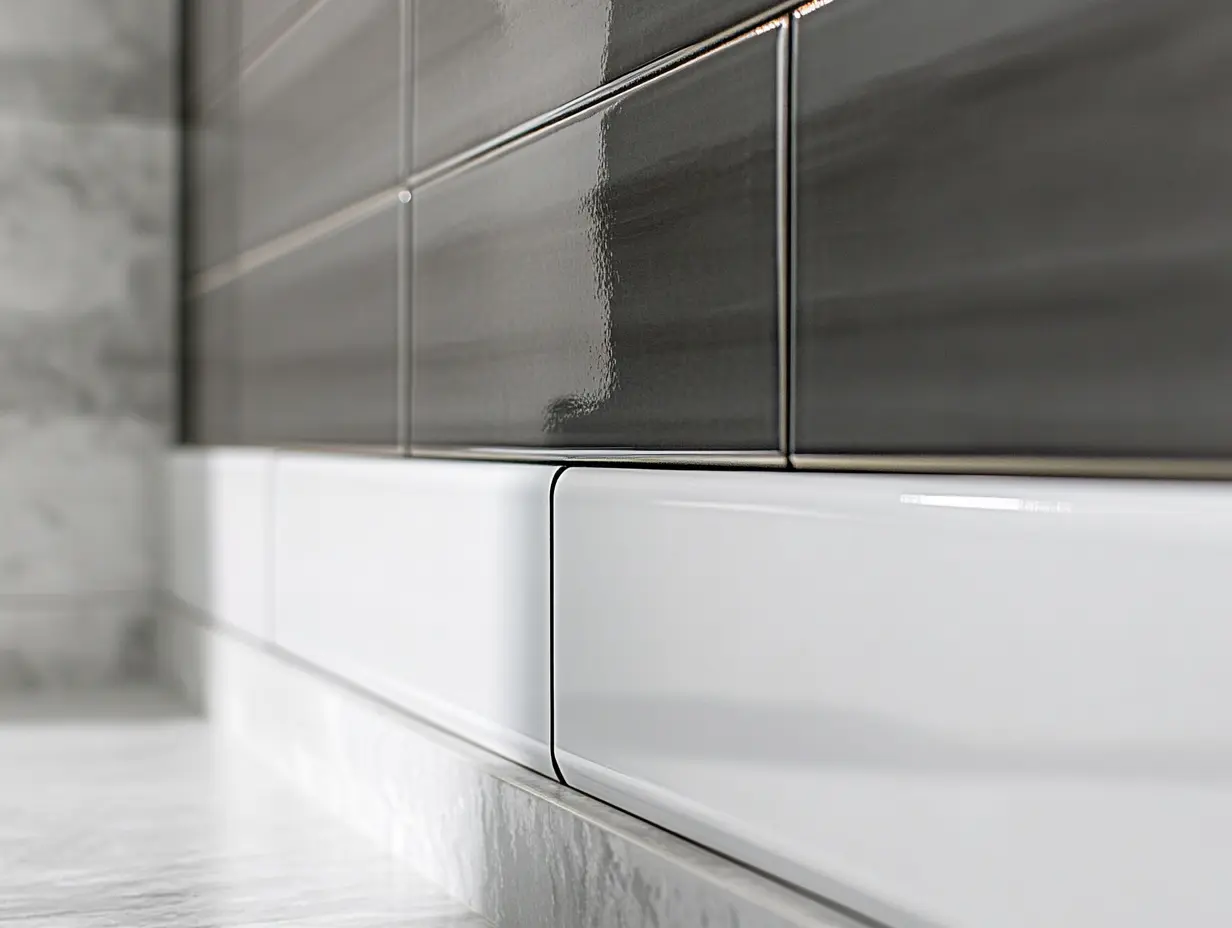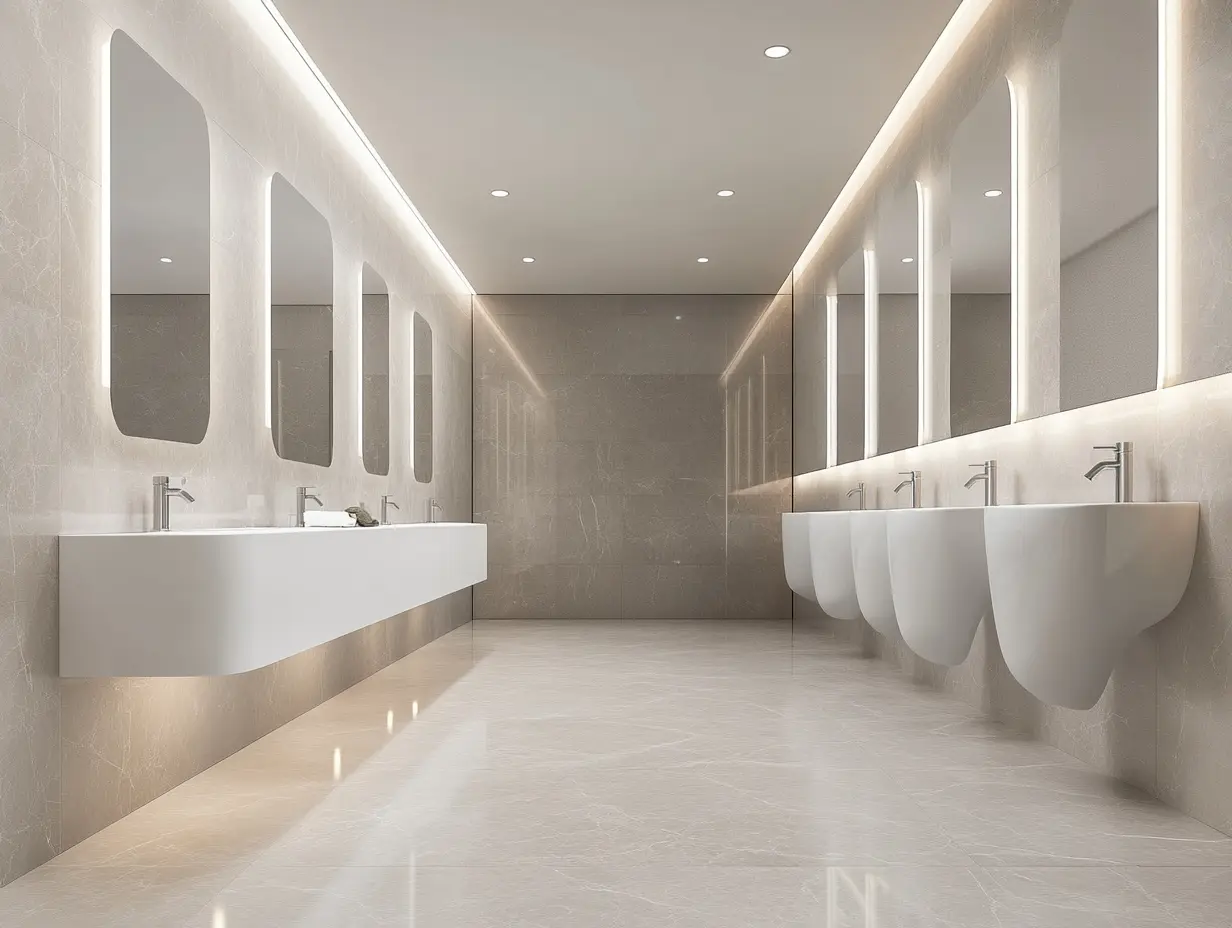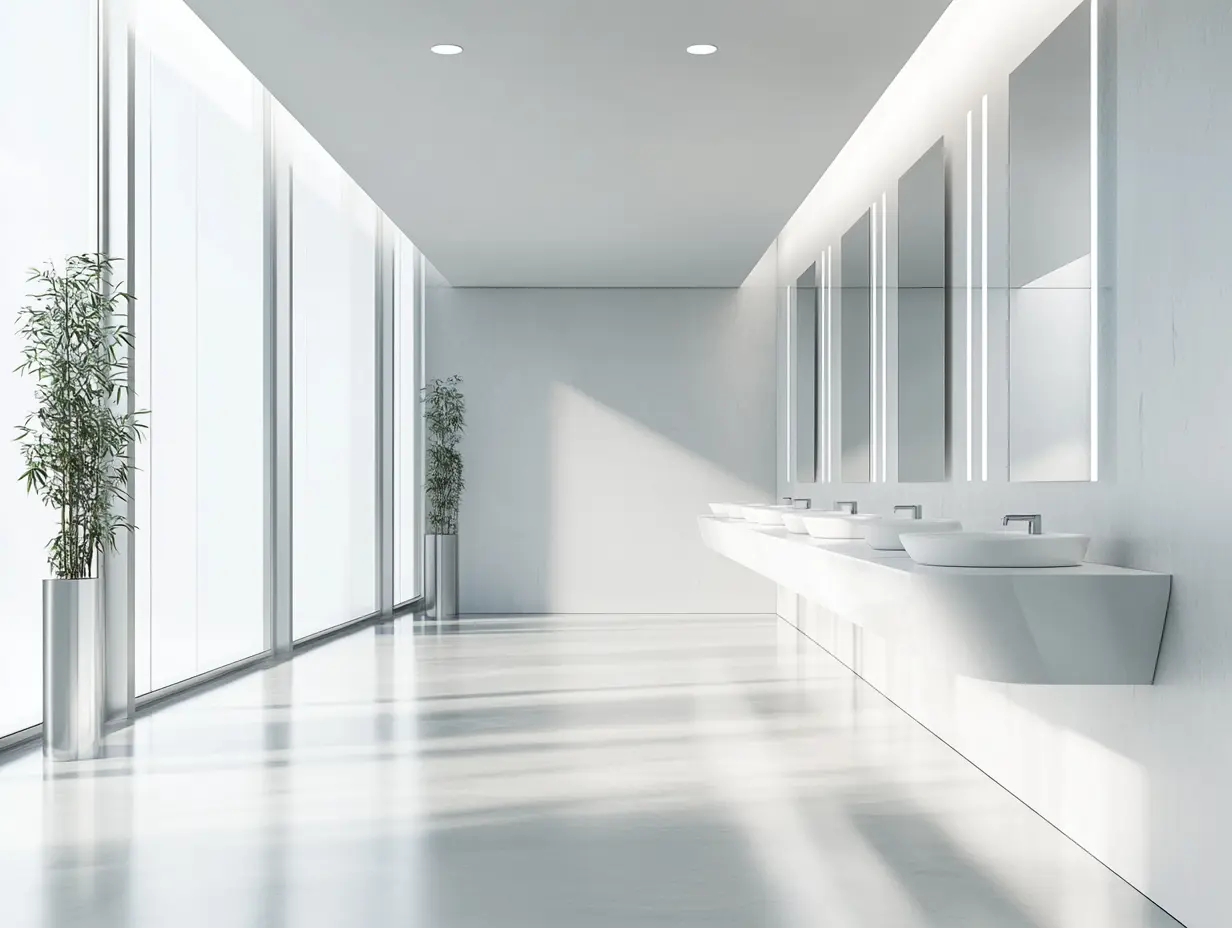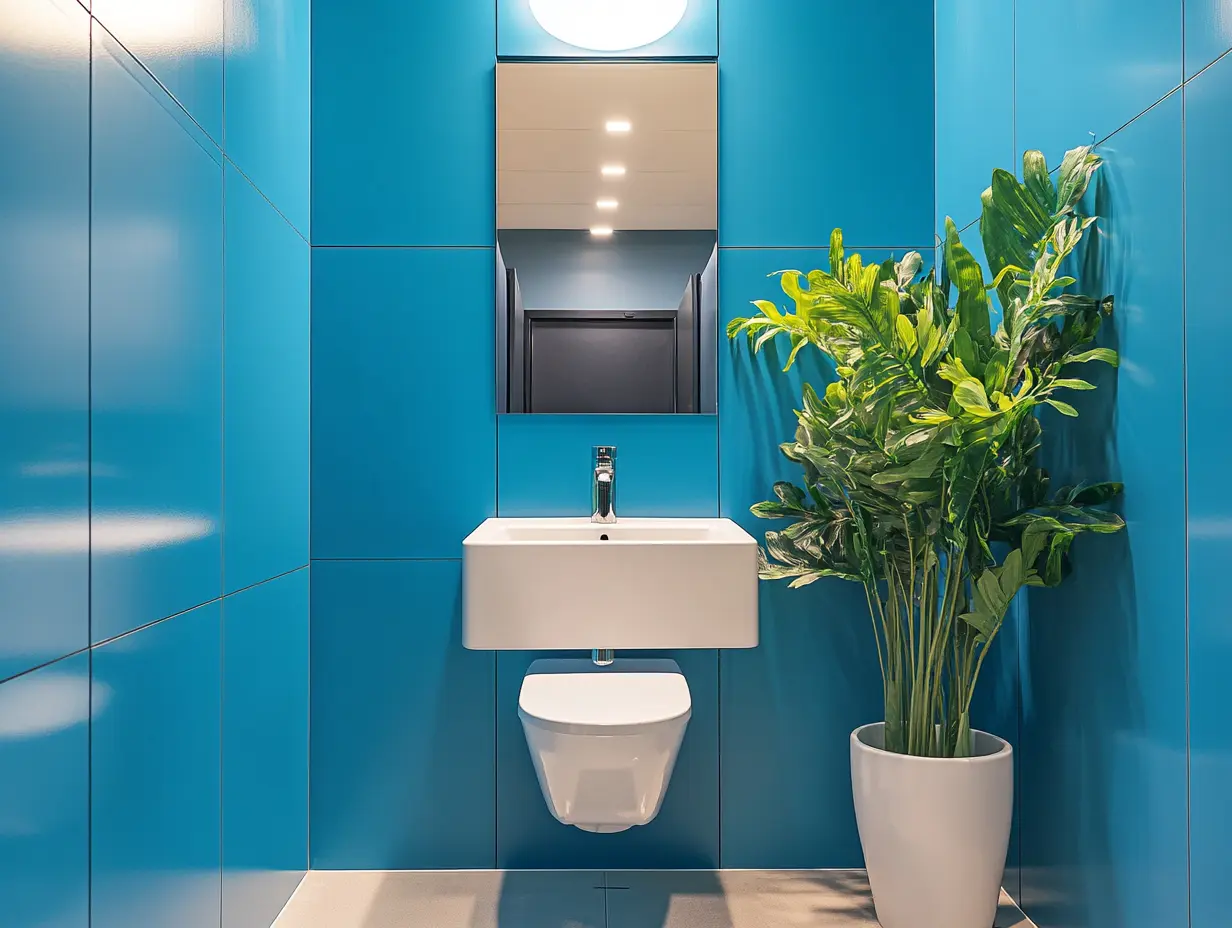Leave Your Message
In recent years, the plastic bathroom cladding products have gained immense popularity in the construction and interior design industries. These materials are aesthetically pleasing and functionally favorable, having water resistance, durability, and ease of maintenance. With the expansion of international markets, the understanding of different certification standards becomes crucial for manufacturers and consumers of these products. Testing the products against international certification standards ensures their quality, safety, and environmental soundness, creating confidence in the local and international markets.
Shandong Eco Decoration Materials Co., Ltd. appreciates the importance of global certification standards and consequently integrates research and development, design, production, and sales aimed at providing the best products to its clients. Eco Decoration has rich experience in foreign trade export and is specialized in a range of items: WPC indoor and outdoor products, Wood veneer, UV boards, WPC decking, Acoustic panels, and SPC flooring. This blog discusses the importance of certification standards for Plastic Bathroom Cladding and how firms such as Shandong Eco Decoration stand committed to sustaining these standards for quality and sustainability in their products.

Plastic bathroom cladding products have gained a lot of popularity as any versatile-and-easy-to-maintain cladding solution. High-quality PVC sheets make up this cladding, deployed as stunning substitutes to traditional materials such as tiles and plaster. Generally, embellishing walls according to their designs mimicking some natural marble finishes give modern aesthetics to an elevated bathroom at cost-effective prices. Therefore, the market has a wide variety of UV PVC sheets specifically designed for use within bathrooms, resistant to moisture and highly cleanable. Apart from the primary functional properties, these products have secondary aesthetic values: both are, therefore, excellent for homeowners and designers. Starting at around $8.4 wholesale, plastic cladding can be an economical investment that meets standards for pleasing looks and durability.

Certification standards are pivotal in ensuring that any plastic bathroom cladding product is safe and reliable. These standards serve as parameters that manufacturers are expected to follow to produce materials meeting high standards of safety. With certification, products gain more acceptance, which translates into consumer- and industry-provided confidence in their performance and durability.
From a fire safety perspective, the recent developments emphasize thorough fire testing and inspection. Passive fire protection actively suppresses the spread of fire, thus, it is mandatory for strict testing and certification of cladding products. When certification standards are duly conformed to, manufacturers can be assured that they are selling a product capable of offering protection while adhering to regulations, which, in the end, accrue safety to users and properties.

Understand concerning international certification standards, safety, and compliance, when it comes to plastic bathroom cladding products. Different certification associations play an important role in ensuring that these products satisfy the safety and performance standards set by the different association. The guidelines would be what a manufacturer should meet and would include several testing procedures, including fire safety, durability, ecological impacts, and many others.
Currently, fire safety is where most discussions on cladding materials are anchored. It cannot be stated enough how important proper fire testing and fire certification are and may be evidenced from most of the recent updates pertaining to passive fire protection means. Good certification not only gives assurance to the consumer on product delivery safety, but also to producers on a complex myriad of regulations and standards. Following guidelines established improves the safety of the built environment while enhancing confidence in their products.

In order to make sure that the material is safe and does not contravene environmental laws, global certification standards for plastic bathroom cladding products become important. These standards stipulate all the required tests and certifications that the manufacturing companies must comply with to render the products safe and sustainably manufactured. These requirements not only protect consumers but also ensure that the industry moves towards a more sustainable agenda.
With debates around fire safety ever-present, it would be fair-minded to say that testing and inspection are critical. Passive fire protection involves the ability of a cladding material to resist ignition and limit fire spread, which is very much desired in the residential and commercial sectors. Manufacturers should be encouraged to seek proper certification to validate their conformity with fire safety standards so that the safety of their products can be reinforced and the buyers reassured.
Performance standards dictate the aesthetics, safety, and durability of bathroom cladding in humid environments. Therefore, knowledge of these standards is essential to manufacturers and consumers. With progress in recent fire safety regulations towards cladding materials, it is now very important to conduct extensive tests and certifications so that products can meet the performance expectations.
The CPD guidelines recognize several important passive fire protection types that can be used to improve the protection given to cladding materials against fire accident hazards. This assures that the product has met various conditions by using appropriate testing equipment and established certification processes. Such proactive methods are essential to ensuring that bathroom cladding fulfills all design criteria and safety regulations, thus contributing to a secure environment for users.
Understanding the global certification standards is vital for the safety and compliance of plastic bathroom cladding products. Fire safety is one area that has received a lot of attention in light of the recent rules like CPD 15 2019 focused on the need for relevant fire testing, certification, and inspection. They provide a common platform for demonstrating to the manufacturers that their product is capable of resisting fire hazards.
A comparative study of the certification systems would show drastic differences between various regions and organizations. This difference could affect anything from testing protocols to the rigor with which inspections are carried out. By deconstructing these systems, stakeholders will negotiate their way through compliance issues with greater confidence concerning their use of materials in bathroom cladding and thus improve safety within residential and commercial areas.
It is important to offer certification in plastic products for bathrooms, as this plays a significant role in the mind of the consumer. With safety becoming a growing concern in buildings, especially in terms of fire, consumers are more inclined to purchase certified products for the assurance of quality and safety. Certification standards, such as those discussed in recent deliberations on cladding-fire safety, guide buyers to understand which products have undergone a rigorous testing process in order to comply with safety regulations.
These certifications enhance consumer assurance beyond statutory compliance. Through certifying fire management and inspection practices, they also demonstrate a commitment to safety on the manufacturers' part. Consumers make informed choices, as certified cladding products have met industry standards meant to protect against potential hazards, accrue greater trust in the marketplace.
The certifications for the new forms of plastic cladding underscore the growing importance that fire safety and regulation hold in the world of building materials. As the construction industry accepts more products such as plastic bathroom cladding materials, understanding the standards that govern such certification becomes very important. Recent moves like CPD 15 2019 highlight the increasing need for rigorous fire testing and certification to ensure products comply with fire safety regulations.
The drive for fire safety improvement has inspired manufacturing entities to seek certifications that not only strengthen their competitive positions but also ensure safety in the products. By default, passive fire protection practice has become a norm, guiding the manufacturers in terms of the right materials and construction techniques. Therefore, as these trends continue to advance, stakeholders must keep themselves updated with the certification requirements and the growing safety standards in the built environment to keep it safer.
As the global consciousness surrounding fire safety continues to intensify, the present scenario of certification standards for plastic bathroom cladding products is faced with challenges. The most rec recent discussions in industry-oriented continuing profession development (CPD) events have highlighted the issue of rigorous testing and inspection for fire performance and regulation compliance. It is deemed essential to implement passive fire protection in a manner that stops fire from spreading in residential and commercial environments.
The evolving world of regulation requires that manufacturers react promptly to the exigencies of the current regulation and anticipate impending changes. Such rapid adaptability will facilitate the adoption of new materials and technologies for cladding design, which, naturally, should never compromise safety. A general agreement among all stakeholders will enable the setting up of frameworks that conjugate innovation with performance and safety requirements in the international market.
Understanding the difference between certified bathroom cladding products and others is an important thing. Certified products comply with stiff standards and have passed several tests of different aspects of safety, including fire resistance. Non-certified products, however, are not always subject to these basics and, therefore, may expose users to certain hazards.
Recent insight into fire safety standards simplifies what they mean for proper and thorough certification and inspection methods, emphasizing that certified products provide the best passive fire protection strategies to prevent most fire risk problems in the event of an incident as well as bring peace of mind for homeowners and builders. The distinction affects not only safety but also affects the long-term performance and durability of the cladding from different environments.
Global certification standards are essential guidelines that ensure material safety and compliance with environmental regulations, outlining necessary tests and certifications for manufacturers.
Fire safety testing ensures that cladding materials resist ignition and limit fire spread, which is vital for both residential and commercial applications, enhancing overall safety.
Certification enhances consumer trust by assuring buyers that products have undergone rigorous testing to meet safety regulations, especially regarding fire risks.
Certification standards help consumers make informed choices by indicating which products meet industry standards designed to protect against potential hazards.
Emerging trends emphasize increased focus on fire safety and regulatory compliance, with recent developments pushing for rigorous fire testing and enhanced safety measures.
Manufacturers can demonstrate their commitment to safety by obtaining and showcasing certifications that validate compliance with fire safety standards and inspection practices.
Stakeholders should stay informed about certification requirements and advancements in safety standards to foster a safer built environment as trends evolve.
Passive fire protection refers to methods that include materials and construction techniques specifically designed to resist fire and prevent its spread, becoming a standard practice in the industry.

